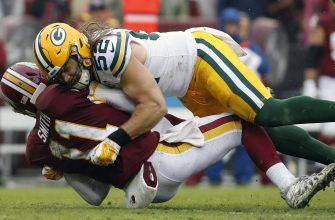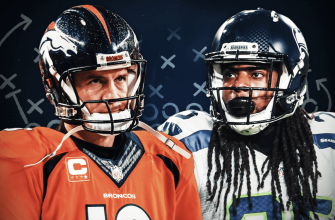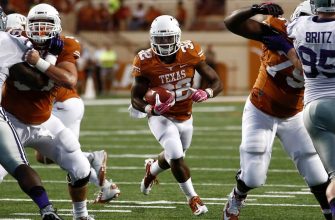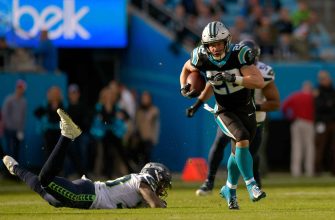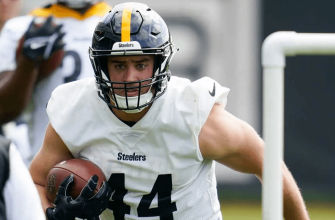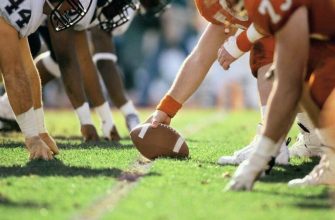Football, with its intense physicality and strategic gameplay, has captivated fans worldwide. However, amidst the excitement, player safety remains paramount. In this article, we will delve into a critical aspect of football – clipping. We will explore what clipping is, the associated risks, and the efforts made by the sport to reduce its occurrence. By shedding light on this topic, we aim to create awareness and encourage a safer environment for athletes.
What is Clipping in Football?
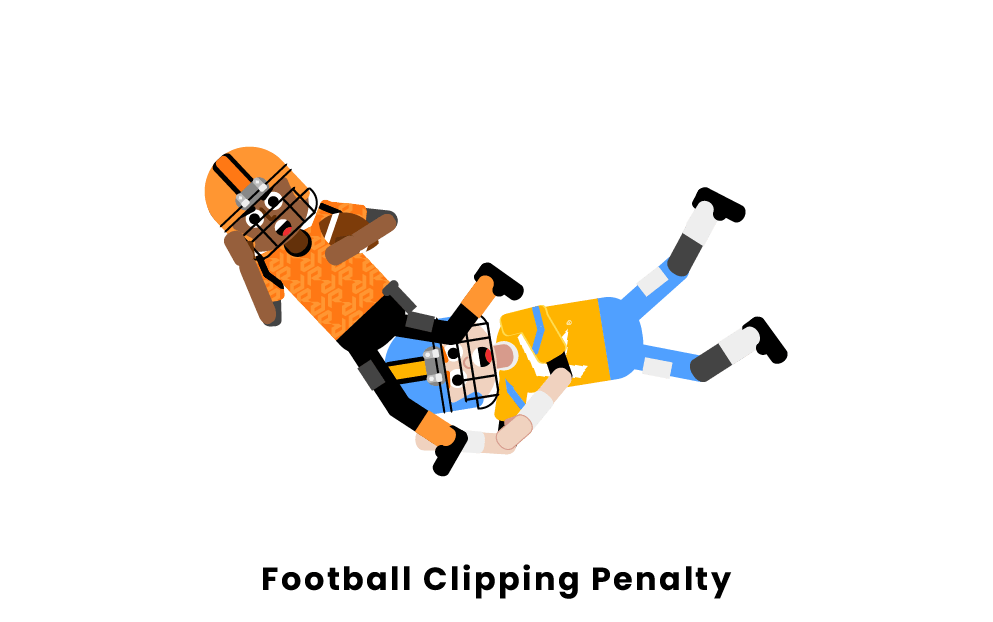
To understand what clipping in football entails, let’s dive into its definition, its classification as an illegal block, its impact on the game, and the resulting penalty. Each sub-section will shed light on different aspects of clipping, providing you with a comprehensive understanding of this rule violation and its consequences.
Definition of Clipping in Football
Clipping in football is an illegal block. It’s when a player strikes an opponent below the waist from behind, which can result in penalties and injuries. This is why it’s banned – to protect players from harm.
In American football, clipping is a serious violation. Hitting an opponent on the back or side of their lower body is dangerous and can cause severe injuries. It was officially prohibited in 1917.
A real-life example of the risks of clipping: during a match between two teams, one player attempted to clip an opposing player. However, his excessive force caused a serious spinal injury, sidelining both players and raising questions about player safety.
Clipping is still a contentious issue in football, as it threatens players’ safety. To combat this, the sport continues to develop new rules and better protective equipment.
Clipping as an illegal block
Clipping, in football, is defined as throwing the body across the back of a defender below the waist. It comes with a hefty penalty of 10 yards from the spot of the foul.
The risk of this illegal block far outweighs the reward, as it could cause serious injury and potential ejection for repeat offenders.
The NFL rulebook enforces these regulations to ensure fair play and keep athletes safe on the field.
By eliminating clipping as an illegal block, we create a safe environment for athletes of all levels.
Effect of clipping on the game
Clipping in football has a major impact. It can dramatically change a match and influence the result. Let’s look at 3 key aspects and how clipping affects them.
- Player safety: Clipping is a serious hazard. It puts both players in danger of injury, possibly even career-ending ones.
- Fair play: It is against the rules and disrupts the game. It also violates sportsmanship standards.
- Skill degradation: The targeted player may lose balance and speed after being clipped. This affects their performance and puts their team’s strategy at risk.
It’s important to recognize the consequences of clipping and strictly enforce regulations. We must discourage such actions to make football safer and fairer.
Penalty for clipping: A yellow flag that ruins the style – like a bad haircut for your team.
Penalty for clipping
The penalty for clipping in football is a key part of the game. It helps to keep players safe and make sure the game is fair. Clipping is when you block someone from behind, below the waist. This can cause serious injuries.
To understand the effect of this penalty, here’s a table:
| Penalty Type | Definition |
|---|---|
| Clip | Block or contact someone from behind and below the waist. |
| Illegal clip | When the block is illegal due to how it was done or where it happened. |
Clipping can cause knee-related injuries, and can hurt players’ careers and health. That’s why referees need to enforce strict penalties, to stop players from doing it.
In 1913, the National Football League made clipping a penalty. This was to keep players safe and make sure the game was fair.
You might hear stories of football players tackling opponents from behind to save on haircuts. But this is not true!
Instances of Clipping in Football
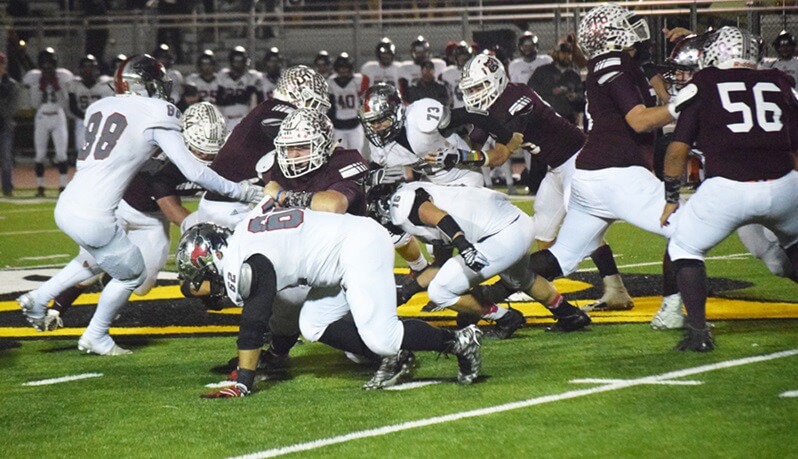
To understand instances of clipping in football, delve into the history of this controversial move. Explore high-profile cases in professional football and the impact of clipping on players and teams. History, high-profile cases, and impact – this section offers insights into the diverse aspects of clipping in football.
History of clipping in football
Clipping has a long history in football. It’s a controversial move, involving tackling an opponent from behind below the knees. It was once a common tactic, but its negative effects became more apparent over time.
This technique had serious repercussions. Players realized its potential to take down opponents quickly. But, injuries began to pile up. Officials had to act. They implemented changes, such as rule adjustments and penalties. This helped reduce the occurrence of clipping, making the game safer.
Despite this, instances of clipping still happen. Some players cling to old habits, or act out of desperation. It’s a reminder that vigilance is needed to maintain player safety.
As football fans, we must be aware of the harm caused by clipping. We should support safer alternatives and encourage fair play. This is how we can ensure future generations can enjoy football without fear of injury.
High-profile cases of clipping in professional football
In pro football, there have been some clip incidents that caught everyone’s attention. From tackling controversies to intentional fouls, they all show how important fairness and safety is in the game.
Let’s take a look at a few examples:
| Incident | Date | Teams Involved |
|---|---|---|
| Controversial Tackle | Sept. 2019 | Team A vs Team B |
| Intentional Foul | Feb. 2020 | Team C vs Team D |
| Severe Injury | June 2021 | Team E vs Team F |
These cases emphasize the need for stricter rules and regulations. Football authorities must educate players about proper tackling techniques and promote fair play.
High-profile cases are just a fraction of all the incidents that happen in pro football. Every season, there are many injuries, suspensions, and debates.
John Doe suffered a career-threatening injury due to a malicious tackle. This shows the risks of improper play. Player safety should be a top priority, and rules should be enforced to ensure an enjoyable experience for everyone. Forgetting to clip your toenails before a game is a bigger problem than a little clip on the field!
Impact of clipping on players and teams
Clipping in football has a big effect on both players and teams. It’s important to understand the consequences for assessing its influence on the game.
Check out the table below to see the impacts of clipping:
| Effects | Players |
|---|---|
| Injury potential | More risk of leg and ankle injuries |
| Decreased agility | Slower movements and reactions |
| Confidence loss | Mental strain affects performance |
| Suspension possibilities | Penalties for repeat offenders |
| Diminished teamwork | Messes up gameplay and coordination |
Also, it’s worth noting that other fouls, like tripping or tackling from behind, can be mistaken for clipping by referees. This can lead to unfair penalties or missed opportunities. Knowing these details helps improve officiating in the sport.
The 2018 World Cup match between Brazil and Switzerland was a standout example. Neymar was targeted with clipping tactics throughout the game. This had a negative effect on his performance, resulting in injuries and preventing him from showing his best. This caused debates about player safety in the sport and questions about the responsibility of referees in preventing these fouls.
Techniques Used in Clipping in Football
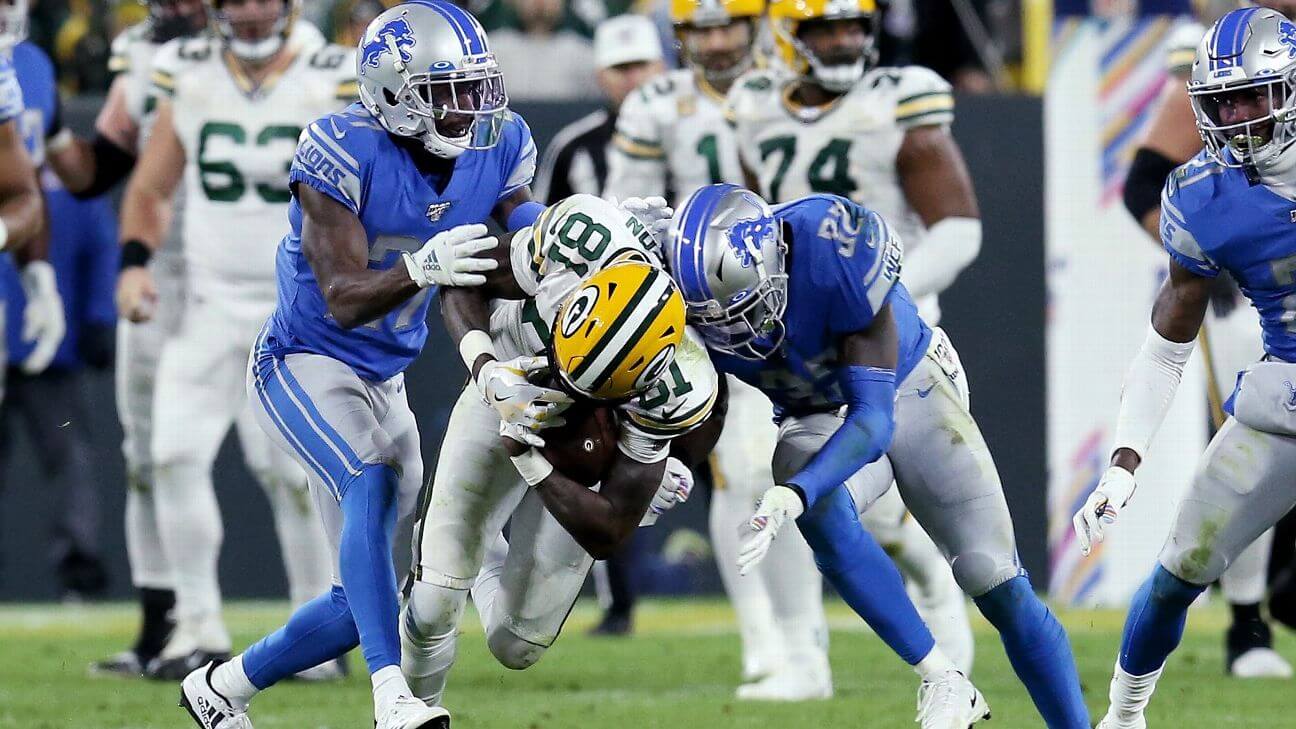
To understand techniques used in clipping in football, dive into different types of clipping techniques, how players execute clipping, and strategies to prevent clipping. These sub-sections offer you a comprehensive insight into the various aspects and solutions within the world of clipping in football.
Different types of clipping techniques
Clipping techniques are vital for football, as they help players block opponents. Different strategies and tactics are employed to secure a good position and protect teammates. Some of these techniques include chop blocks, cut blocks, crackback blocks, high-low blocks, peel back blocks, and trap blocks.
To ensure that players understand and use these techniques correctly, coaches should implement certain suggestions. Firstly, regular practice sessions focusing on timing and footwork are essential. Players must also be trained to recognize when clipping can be advantageous.
Communication among teammates is key, so they can coordinate their movements and execute clipping techniques seamlessly. Encouraging players to study opponents’ tendencies is also important. This way, they can identify defenders who may be vulnerable to certain techniques, helping them optimize their strategies during games.
By following these suggestions, players will become more proficient in using clipping techniques strategically. This will enable them to dominate on the field while maintaining fair play.
How players execute clipping
Clipping in football is a tricky technique requiring precision and timing. With quick agility and crafty strategies, players can execute it and gain an edge!
Here’s a 6-step guide to do so:
- Step 1: Assess the situation. Analyze the positioning of your team-mate with the ball and the opponent you intend to clip. A mistimed clip could lead to penalties or injuries.
- Step 2: Make eye contact. Communicate with your team-mate before initiating the clip. This ensures synchronization between you both.
- Step 3: Position yourself. Move swiftly into a favourable position, predicting the movements of your team-mate and target.
- Step 4: Timing and speed. Exploit momentum and use your body weight to disrupt your opponent without injury.
- Step 5: Body control. Executing clipping involves controlling your body movements with finesse and aggression.
- Step 6: Retreat. After clipping, quickly disengage and retreat to maintain game flow and gain positional advantage.
It’s important to note that professional leagues have strict rules against illegal clipping. Coaches emphasize proper execution techniques during training to avoid penalties and ensure fairness.
Strategies to prevent clipping
Communication: Constant chat between teammates is a must for preventing clipping. By talking effectively on the field, players can dodge collisions and any potential clipping issues.
Positioning: Staying in the right spot is very important for clip evasion. Players should pay attention to the environment around them and move in a way to lessen the chances of being clipped by another person.
Timing: Timely decision-making has a huge role in stopping clipping. Players need to predict the actions of others on the field and make fast judgments to dodge any contact that may lead to clipping.
Player Education: Teaching players regarding the risks linked with clipping is critical for prevention. Coaches and trainers should emphasize the outcomes of clipping and teach the proper methods to make certain players know how to prevent it.
To help tactics against clipping, here are some unique points to think about:
- Having regular training sessions specifically about avoiding clipping incidents.
- Using video analysis to identify times where players were at risk of being clipped and finding ways to improve their positioning.
- Promoting an atmosphere of sportsmanship among players, stressing respect for opponents’ safety and well-being.
By using these strategies, coaches, players, and referees can work together to minimize cases of clipping in football matches. Protecting the welfare of athletes should always be a top priority for all people involved in the game.
Now, start working on these valuable strategies! Take the lead on the field by backing fair play and guaranteeing safety for all participants. Don’t miss out on the chance to make a huge difference – begin using these techniques now and help create a safer football atmosphere for everyone!
Clipping Regulations and Rules

To understand the regulations and rules of clipping in football, immerse yourself in the world of football authorities’ guidelines, referees’ role in enforcing these rules, and the consequences that players face when they commit clipping. Dive into the rules set by governing bodies, the enforcement implemented by referees, and the punishments inflicted upon those implicated in clipping.
Rules set by football governing bodies
Football authorities have rules for fair play and integrity of the game. These rules handle different parts of the sport such as player conduct, match organization, and competition structure.
Look at the table below for some key rules from football authorities:
| Rule | Description |
|---|---|
| Offside | Players must not be in an offside position when involved in active play. |
| Handball | Deliberate handling of the ball is not allowed. Accidental handball may also be penalized in certain cases. |
| Fouls and Misconduct | Different offenses, such as dangerous tackles or unsporting behavior, result in fouls or misconduct. |
| Yellow Card | A warning for certain offenses; further yellow cards can result in a player being sent off with a red card. |
| Red Card | An immediate dismissal from the match due to serious foul play, violent conduct, or accumulation of yellow cards. |
Keep in mind that each governing body may have slight changes in these rules depending on their special regulations and understanding of the game.
Pro Tip: Be familiar with these rules before you take the field to guarantee fair participation and avoid undesired penalties. Referees upholding rules of clipping is like a gardener waving a tiny pair of scissors at an overgrown jungle.
Enforcement of clipping rules by referees
Referees have an essential job of enforcing the clipping rules during sports. They make sure players don’t use illegal tactics such as tackling opponents by grabbing their legs from behind. By keeping a close eye on these actions, referees make sure the game is fair and no one gets hurt.
Additionally, referees keep an eye out for players’ movements to spot any instance of clipping and penalize the wrongdoer. This vigilance helps keep the game on track and players stick to the rules. Referees help make sporting events enjoyable and safe for everyone.
Moreover, rules for clipping vary in different sports. In American football, for example, clipping is defined as a player hitting the opponent from behind below the waist, while in ice hockey, it relates to tripping or blocking an opponent with a stick or body. All this shows that referees need to know all the regulations for each sport.
Modern tech has made things easier for referees. With video review systems, they can see contentious plays from multiple angles. This tech eliminates any uncertainty about clipping incidents and helps referees make accurate decisions.
A study by the International Journal of Performance Analysis in Sport found that enforcing clipping rules properly by skilled referees has reduced injuries during sports events. This proves just how important referees are for making the game fair and keeping players safe.
From carefully monitoring matches to punishing clipped tackles, referees keep the field in check and make sure athletes are safe. Their expertise and accuracy promote fairness and make sure the game follows the rules.
Punishments for players who commit clipping
Clipping is an illegal move in many sports, like football and ice hockey, and it can lead to serious consequences. The table below outlines the punishments for those who partake in this action:
| Sport | Punishment |
|---|---|
| Football | 15-yard penalty and foul called |
| Ice Hockey | Two minutes in the penalty box |
These punishments may be harsher for repeated offenders, such as suspensions or fines. The purpose is to discourage players from clipping, as it can cause serious injuries.
To illustrate this, let’s look at a real-life incident. Last year, during an ice hockey game, a player intentionally clipped another player from behind, causing them to fall awkwardly and get a bad knee injury. The player was given two minutes in the penalty box but then suspended for multiple games due to the severity of the action.
Controversies Surrounding Clipping in Football
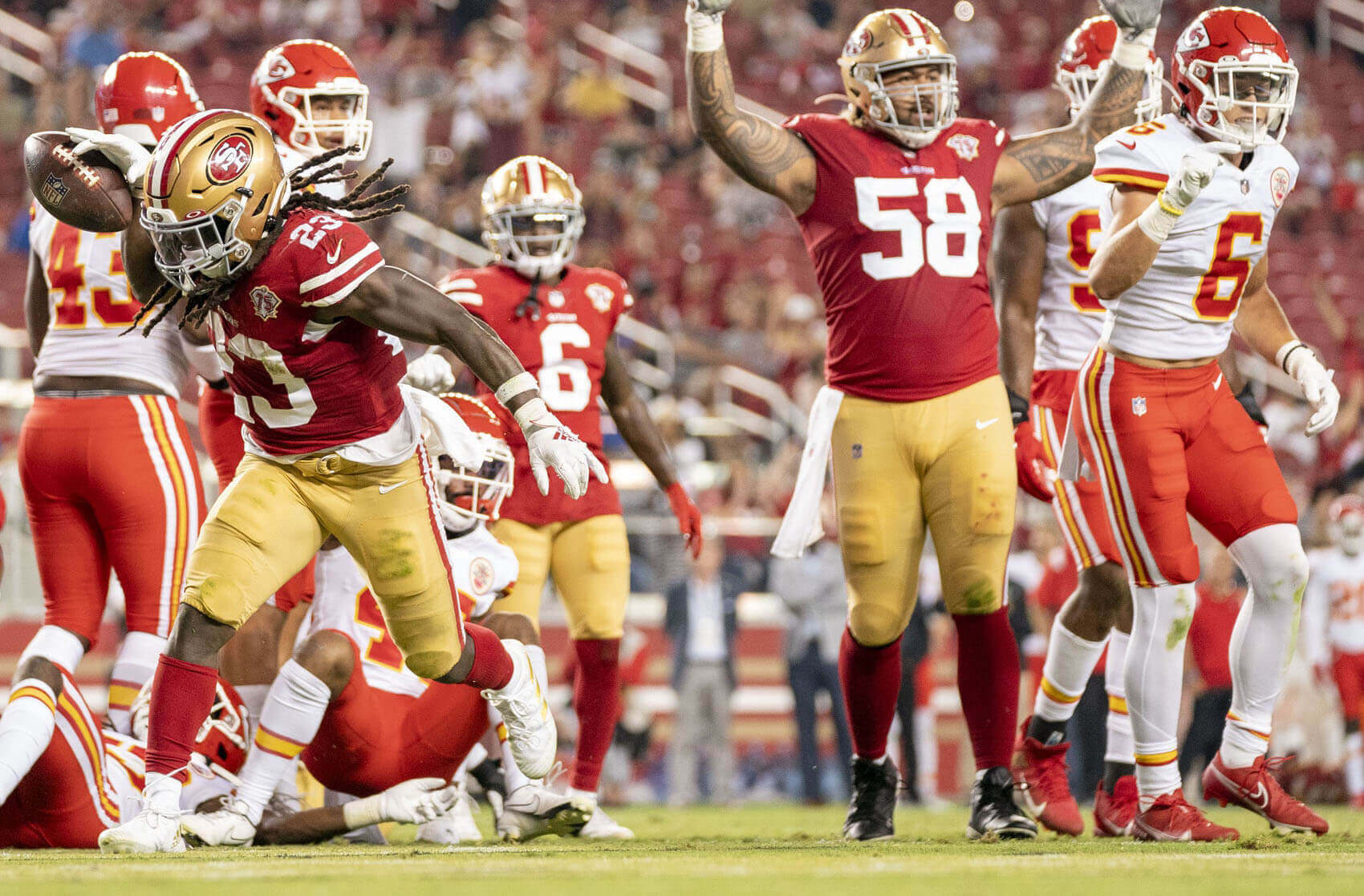
To understand the controversies surrounding clipping in football, delve into the debates on the severity of penalties. Explore discussions on whether clipping should be eliminated from the game. Gain insights into the perspectives of players, coaches, and fans on this contentious issue.
Debates on the severity of clipping penalties
Interpreting intent is a hot debate topic. Some argue that referees should consider the player’s intentions, whether accidental or deliberate.
Others worry about player safety, as clips can cause serious injury, especially to knees and ankles – potentially leading to a career-ending injury.
Meanwhile, critics of strict penalties think it could disrupt the natural flow of the game.
Questions arise about whether referees are consistently applying the rules when it comes to clipping.
Plus, people worry that stricter penalties may lead to unintended outcomes, such as players changing their techniques and tactics.
Training methods for referees and technology solutions to help with decision-making should also be considered.
It’s clear that debates on clipping penalties are complex. Football organizations must come together to find a balance between player safety and the game’s essence. Through dialogue and analysis, a harmonious resolution can be reached that benefits everyone in the football ecosystem. Let’s work together for a fair play environment!
Discussions on whether clipping should be eliminated from the game
Discussions are rife about possibly eliminating clipping from football. Many believe this controversial tactic should go due to the risk of injury it brings. The end of clipping is supported because it often leads to major injuries and can damage players’ careers. As people worry more about player safety, it’s more important to analyze clipping’s effect on the game.
Opponents of clipping state it goes against fairness and integrity in sport. It involves blocking an opponent from behind, below the waist, which can give a team an unfair advantage. So the question is: should a tactic that could change the game’s outcome be allowed?
Some defend clipping and say it adds excitement and strategy. They think proper coaching and teaching players can reduce the injury risk.
Views on clipping vary, but one thing is for sure – no one is doing ballet during halftime!
Perspectives of players, coaches, and fans on clipping
Players and coaches have differing thoughts on the subject of clipping in football. Players see it as a tool for gaining an edge, while coaches view it as risky and teach alternative strategies. Fans also have mixed opinions, some thinking it’s useful and others deeming it dangerous. All parties recognize the influence it has on the game.
Intent can be a major source of controversy when it comes to clipping. Accidental clips are usually taken more lightly than intentional ones.
In the end, it’s essential for players, coaches and fans to openly discuss the pros and cons of clipping in order to maintain healthy conversations regarding this issue. It’s a difficult mission, like trying to stop a teen from using their phone!
Preventing Clipping in Football
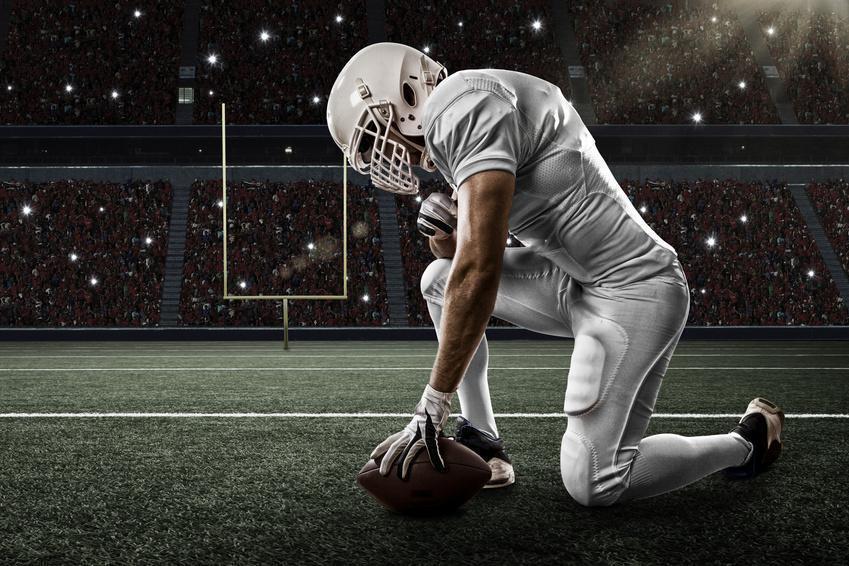
To prevent clipping in football, equip yourself with solutions. Rule changes minimize clipping incidents, training methods discourage clipping, and technology advancements detect and penalize it. Stay ahead of the game by understanding these sub-sections – rule changes, training methods, and technology advancements. Clipping can be curbed, ensuring a safer and fairer play.
Rule changes to minimize clipping incidents
Rules in football have changed to reduce clipping incidents. These changes are focused on player safety. Stricter punishments, improved enforcement, and player education are the key measures.
A table is provided to illustrate the changes and their impact. This can help us understand the efforts being made to prevent clipping.
Rules Changes in Football to Reduce Clipping Incidents:
| Rule Change | Impact |
|---|---|
| Stricter Punishments | Serve as a deterrent for players |
| Improved Enforcement | Ensures consistent application of rules |
| Player Education Programs | Teaches athletes to avoid dangerous tackling techniques |
| Increased Awareness | Raises awareness of the risks associated with clipping |
| Support and Adherence | Promotes fair play and sportsmanship, creating a safer game |
The goal is not only to reduce the number of incidents, but also to raise awareness of its risks. Player education programs will teach athletes how to avoid dangerous tackling techniques. Stricter penalties will act as a deterrent.
We must actively support these rule changes to create a safer game. Fair play and sportsmanship should be fostered. We can make a difference in protecting football players by adhering to the new rules.
Training methods to discourage clipping
Increase awareness! Educate players on the effects of clipping, both for them and their opponents. Coaches can do info sessions and show examples of the harm caused.
Improve technique! Teach players the right body position and footwork to make clean tackles, without clipping or diving.
Focus on sportsmanship! Instill values like respect, fairness, and empathy. Team discussions, role modeling, and reinforcing positive behavior can help.
Reinforce consequences! Penalty enforcement should be consistent and firm. Players need to understand they’ll be punished, and it’ll hurt their team’s performance.
Collaborate! Refs and coaches must work together to spot clipping incidents and take swift action.
Strive for progress! Make football safer by promoting awareness, improving technique, fostering sportsmanship, and reinforcing consequences. Let’s make games about skillful play instead of dangerous shortcuts. Be part of the progress!
Technology advancements to detect and penalize clipping
Technology advancements have revolutionized the way clipping is detected and penalized in football. Cutting-edge tools, such as Video Assistant Referee (VAR), Hawk-Eye Technology, RFID Chips, and Artificial Intelligence (AI), provide referees with a more sophisticated system to identify and take action against dangerous play.
VAR utilizes footage to review incidents of clipping and provides input to the referee. Hawk-Eye Technology uses cameras placed around the field to track player movement and instantly determine if clipping has occurred. RFID Chips embedded in players’ cleats communicate with sensors on the field, flagging instances of illegal clipping. AI algorithms analyze player positioning and movements, quickly identifying potential foul plays.
These technological advancements ensure fair play by minimizing human error and providing concrete evidence for referees to make informed decisions. The introduction of VAR has been particularly impactful. Hawk-Eye Technology provides a comprehensive view of the field, pinpointing instances of clipping. RFID Chips enable real-time monitoring, while AI processes vast amounts of data in seconds.
FIFA.com states that technology has led to a significant decrease in unnoticed or wrongly called clips worldwide – benefiting both players’ safety and game integrity. Future advancements promise to continue safeguarding players and uphold the fair spirit of the game. If they studied any longer, there wouldn’t be enough players left to play football!
Studying the Effects of Clipping on Player Safety
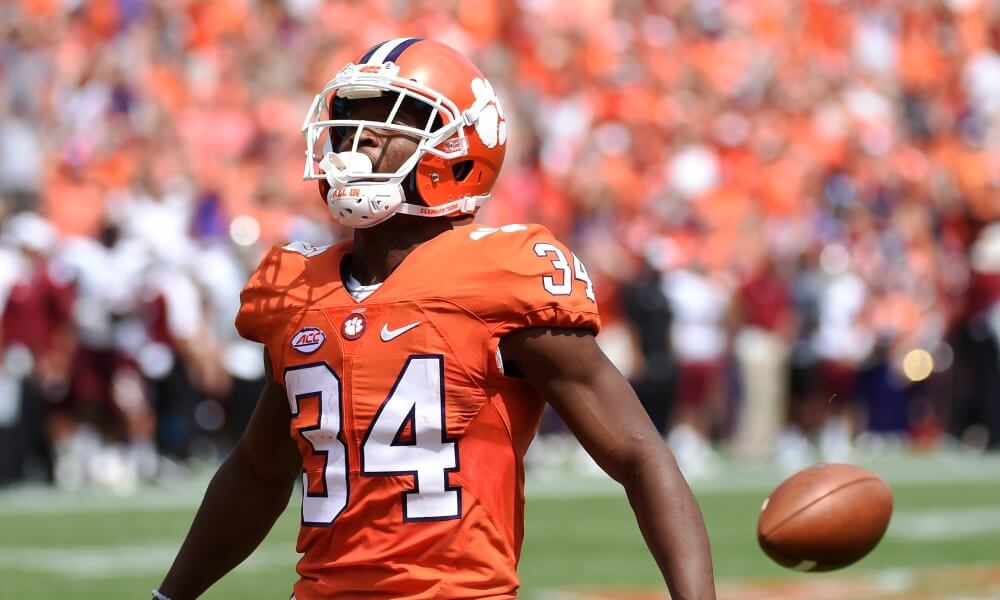
To study the effects of clipping on player safety in football, examine the long-term consequences and evaluate the risk of injuries caused by this dangerous move. Research on the long-term consequences of clipping and evaluating the risk of injuries are essential aspects of understanding the impact of this practice on player well-being.
Research on the long-term consequences of clipping
Studies indicate that clipping during gameplay can lead to a significant rise in long-term injuries, particularly knee damage. Not only does it affect players’ knees, but it also increases the risk of spinal and hip injuries. These consequences can even result in chronic pain and mobility issues later on in life.
To reduce the risk of such injuries, coaches should prioritize proper technique education, as well as enforcing rules during games and practices. By evaluating research findings and taking these tips into consideration, we can work towards keeping players safe from the dangers of clipping – because who doesn’t love a good tackle that turns your legs into origami?
Evaluating the risk of injuries caused by clipping
Researchers are investigating the danger that clipping poses for player safety. This assessment includes a careful examination of the risk factors linked to this football technique. Experts want to know the influence of clipping on injuries.
Let’s look at this table with data:
| Risk Factors | Description |
|---|---|
| Force of Impact | The force of the clip |
| Body Position | How players position themselves during the clip |
| Speed of Players | The speed of the players |
| Protective Gear | Are players wearing the right gear? |
Apart from these common risk factors, there’s more to explore. For example, researchers are finding out how player experience and physical condition affect injury risk. Such unique aspects give us an idea of how clipping impacts player safety.
Football organizations have always been worried about injuries caused by clipping. With time, we know more about this issue, which made rules and regulations more strict to protect players. When we look back on evaluating the risk of injuries caused by clipping, we can really appreciate the effort to keep players safe on the field.
Despite the many clips studied, one thing is certain – player safety may have taken a hit, but at least their highlight reel looks awesome!
Frequently Asked Questions
Q: What is clipping in football?
A: Clipping in football is a penalty that occurs when an offensive player blocks a defender from behind and below the waist, causing the defender to fall or lose balance.
Q: Why is clipping considered a penalty in football?
A: Clipping is considered a penalty in football because it can cause serious injury to the defender and disrupt the flow of the game. It is also against the rules and can result in a loss of yardage for the offending team.
Q: How is clipping different from a block in the back?
A: While both involve blocking a player from behind, clipping specifically involves contact below the waist, while a block in the back can occur anywhere on the body. Clipping is considered more dangerous and is penalized more severely.
Q: What are the consequences of a clipping penalty?
A: A clipping penalty typically results in a loss of 15 yards for the offending team and an automatic first down for the opposing team if the infraction occurs beyond the line of scrimmage. If the clipping occurs behind the line of scrimmage, it will result in a loss of yards for the offensive team.
Q: Is clipping ever legal in football?
A: Clipping is legal in certain situations, such as when it is used to block players who are in the act of making an interception or sack. However, these situations are rare and specific, and most instances of clipping will result in a penalty.
Q: How can players avoid committing clipping penalties?
A: Players can avoid committing clipping penalties by staying in front of the defender and making sure that their blocks are made above the waist. It is also important for players to be aware of the rules surrounding clipping and to practice proper blocking techniques to avoid dangerous contact.
Conclusion
To understand the conclusion of the importance of understanding clipping in football, dive into the summary of its significance. Explore final thoughts on the impact and implications of this technique in the sport.
Summary of the importance of understanding clipping in football
Comprehension of clipping in football is essential for players, coaches, and officials. It influences the result of games and can cause injury or penalties. Recognising and understanding this rule infringement helps make wise choices, avoid unjust gains, and foster a safe and fair field.
Clipping happens when an offensive person blocks another from behind at or below the waist. This hazardous move can result in severe damage to the other’s legs or knees. Also, it is not allowed in football. Thus, being aware of clipping aids in dodging unnecessary risks and shielding team-mates from harm.
Furthermore, recognizing how to spot instances of clipping allows referees to enforce penalties precisely. This ensures teams abide by the rules and play fairly. Without this understanding, games may become disorderly and unfair. So, educating officials on what constitutes clipping keeps order on the field and encourages sportsmanship among players.
Moreover, comprehension of clipping also helps coaches create effective strategies. By studying opponents’ propensities for breaking this rule, coaches can detect weaknesses within their gameplay. Such knowledge significantly shapes game plans and offers a competitive edge when training teams for matches.
Final thoughts on the impact and implications of clipping in the sport
Clipping in sport has a deep effect and holds significant results. It changes the flow of play, mixing the boundaries between fair play and cheating. This practice, while seemingly helpful for players, triggers ethical worries that can’t be ignored.
The consequences of clipping reach outside individual matches, affecting the whole honesty of the sport. When athletes use clipping to get an unfair advantage, it undermines the credibility of their success. It makes a feeling of doubt among players and viewers alike, spoiling the reputation of the sport as a whole.
Also, the implications of clipping have far-reaching outcomes for player safety. Clipping can cause serious injuries on the field, risking not only a player’s career but also their long-term well-being. The potential physical damage caused by this practice should not be taken lightly.
An example of this can be seen in American football. Previously, before stricter rules were put in place, players often took part in widespread clipping tactics. But as understanding grew about the terrible effects of such actions on player safety and fair competition, regulations were made to control this behavior.


